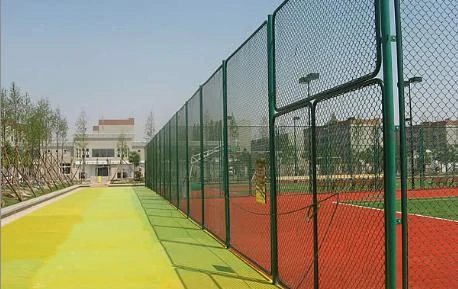 TEL:
+86-13102802206
TEL:
+86-13102802206
 Email:
fencenetting@china.com
Email:
fencenetting@china.com
 Language
Language
 TEL:
+86-13102802206
TEL:
+86-13102802206
 Email:
fencenetting@china.com
Email:
fencenetting@china.com
 Language
Language


Living Gabion Walls A Sustainable Solution for Modern Landscaping
In recent years, the concept of living gabion walls has gained popularity as an innovative and environmentally friendly approach to landscaping and erosion control. These structures, traditionally made of wire mesh filled with stones, have evolved to incorporate vegetation, creating a blend of natural aesthetics and functional design. This unique combination not only enhances the visual appeal of outdoor spaces but also contributes to biodiversity and sustainable landscaping practices.
Living gabion walls are constructed by filling wire mesh baskets with natural materials such as stones, soil, and a variety of plants. The key to their effectiveness lies in the choice of vegetation. By selecting native plants, the wall can support local ecosystems and contribute to the preservation of regional biodiversity. These plants can thrive in the specific environmental conditions of their location, ensuring that they require less maintenance and watering compared to non-native species.
One of the primary benefits of living gabion walls is their ability to combat soil erosion. Traditional retaining walls can be rigid and may not effectively absorb rainwater, leading to runoff and erosion. In contrast, living gabion walls are designed to manage water flow more efficiently. Their porous nature allows rainwater to infiltrate the structure, promoting groundwater recharge and reducing surface runoff. This is especially crucial in areas prone to heavy rainfall or steep slopes, where erosion can pose significant risks.

Moreover, living gabion walls can provide additional benefits such as habitat creation for wildlife. Birds, insects, and small mammals are likely to inhabit these structures, fostering a rich ecosystem right in one’s backyard. This not only supports local wildlife but also creates opportunities for homeowners and communities to engage with nature, enhancing their outdoor experience.
From a design perspective, living gabion walls offer a versatile solution that can be tailored to various landscapes. They can be constructed in different shapes and sizes, allowing for creative landscaping possibilities. Whether used as a decorative element, to create seating areas, or to define spaces in a garden, they seamlessly integrate with nature, enhancing the overall ambiance of the environment.
In conclusion, living gabion walls are an exciting development in sustainable landscaping. By marrying function with aesthetics, they provide an effective solution for erosion control while promoting biodiversity and creating a habitat for wildlife. As more people and communities recognize the value of eco-friendly landscaping practices, living gabion walls are poised to become a staple in environmentally-conscious design. Embracing these innovative structures allows us to create beautiful spaces that work harmoniously with nature, nurturing both our surroundings and local ecosystems.